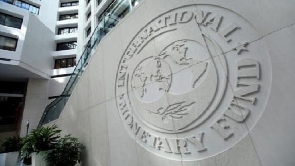The International Monetary Fund (IMF) has said countries with high debt vulnerabilities need to tackle them through a combination of adjustment and measures to restore growth.
The IMF said Public debt, or sovereign debt, is an important way for governments to finance investments in growth and development.
However, it is also critical that governments are able to continue servicing their debt and that their debt burden remains sustainable. Entering into debt distress is often a painful process, which may threaten macro-economic stability and set back a country’s development for years.
“Supporting member countries in managing debt risks and resolving debt distress is therefore at the heart of the IMF’s work. This work takes multiple forms.
The IMF’s analytical work helps identify sovereign debt risks and provides policy advice on how to address these risks at an early stage. Jointly with the World Bank, the IMF fosters debt transparency and supports countries in strengthening their capacity to report and manage their public debt. Technical support to member countries on formulating a debt management strategy and developing their local currency bond markets are at the core of such assistance that promotes a prudent debt structure and adds resilience to withstand economic shocks.
“Countries with high debt vulnerabilities need to tackle them through a combination of adjustment and measures to restore growth.
“An IMF-supported program can facilitate that adjustment, but the IMF can only lend to a member if its debt is sustainable. There are cases where debt is unsustainable, even taking the adjustment efforts into account. If a member country enters into debt distress, only the country’s government can decide whether to solve this by negotiating a debt restructuring with its creditors. An IMF-supported program can support a member in the context of a debt restructuring by providing sound economic policies and new financing, enabling the return to macroeconomic viability. The IMF is also lending its support to improving the international architecture for sovereign debt restructurings, which is critical to enable faster and more effective debt reduction.”
Concerns have been raised about the level of Ghana’ public sector debt.
The 2021 budget statement presented to parliament by leader of government business Osei Kyei-Mensah-Bonsu said the total debt rose from 122billion in 2019 to 291.6billion as at the end of December 2020.
This deficit, according to the budget, includes the cost of the financial sector cleanup up.
Director of the Institute of Social, Statistical and Economic Research (ISSER) of the University of Ghana, Professor Peter Quartey, has said, the best way the government can reduce the overreliance on loans and also reduce the public sector debt is to increase domestic revenue mobilization.
He has therefore welcomed efforts by Ghana Revenue Authority (GRA) to used digitisation to increase domestic revenue collection.
Prof Quartey was cautiously optimistic that Ghana will be able to reduce its debt in the next two to three years owing to the measures introduced by the GRA.
He explained on the Business Focus Programme on TV3 Monday, April 19 that this is due to the measures introduced by the Ghana Revenue Authority (GRA) to maximize domestic revenue mobilization.
“I believe if we are able to raise more revenue domestically then we can then we can reduce our dependence on loans,” he said while speaking on the debt situation in the country on the Business Focus on TV3 Monday, April 19.
He told host Alfred Ocansey that “At the moment our revenue to GDP ratio is below the threshold. Unless we show commitment to enhance our revenue generation we will continue to be in this kind of situation.
“I have seen efforts on the part of GRA to do what I call digitization to minimize the human interface in terms of revenue generation. If we are able to sustain that and are successful then I am very sure that in the medium term, in the next two to three years, we will enhance our revenue generation and reduce our dependency on loans and our debt to GDP ratio will certainly come down.
“Debt to GDP is a combination of two factors, total debt stock and as well as gross domestic product. If we grow our GDP, the projection is that we are going to grow by 5 percent. If we are able to do that as well as continually reduce our debt levels GDP ratio is likely to come down.
“So, I am cautiously optimistic that we might be able to reduce our debt to GDP ratio in the next two to three years.”
Business News of Monday, 26 April 2021
Source: 3news.com







![NPP Flagbearer, Dr. Mahamudu Bawumia [L] and NDC Flagbearer John Mahama NPP Flagbearer, Dr. Mahamudu Bawumia [L] and NDC Flagbearer John Mahama](https://cdn.ghanaweb.com/imagelib/pics/869/86902869.295.jpg)









